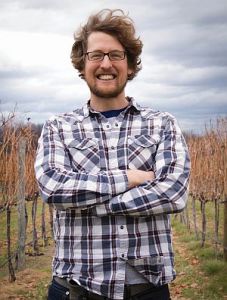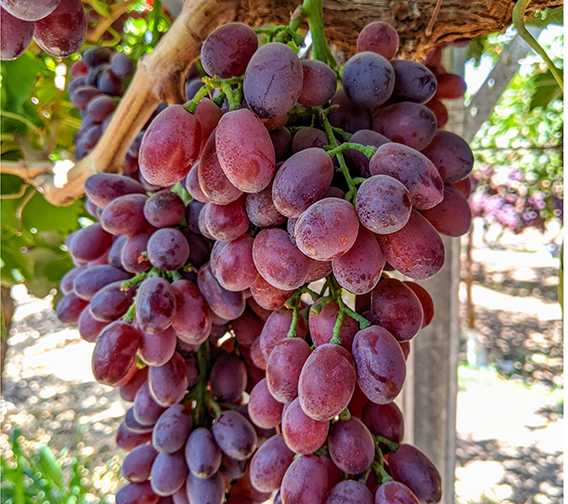Growers In A Challenging Environment Welcome On-Farm Trials

Tremain Hatch
The Mid-Atlantic is a new and difficult environment to grow winegrapes. Growers face the challenges of a humid environment and the potential for cold injury to grapevines. However, in the face of these challenging circumstances, there is great wine being grown here in the Mid-Atlantic. These fine wines are testament to perseverance and ability to learn, attributes that our best growers share.
Experience counts in this industry. There are perils in the East that make bringing in a ripe and intact grape harvest a difficult accomplishment. After facing this steep learning curve, I see growers separate into two groups. Some growers continue to study and modify their management programs and some growers become set in their ways.
Winegrapes are an intensive crop; there are multiple management decisions in the design, installation, and production phases. These decisions provide an opportunity to try multiple approaches, and see how they affect production costs, crop quality, and quantity.
My perception is that the experienced growers who continue to trial new practices and techniques build a much more solid base or pool of information about grape growing in our environment. These growers with more information can make better wine in our challenging environment more often than those that become static in their management programs.
This pool of information is helpful for making decisions key to profitability or finding the edge, or balance, at which to maximize margins. Hard to find, this balance is difficult to stumble upon. Risky in that pushing crop production to the edge means there is the potential to fall off.
Pick And Choose Where To Experiment
I would not recommend conducting trials in all aspects of the vineyard, especially not for new growers. Finding the correct balance of trials to run in any given season will depend on the grower’s labor, recordkeeping and time availability, and what components of vineyard management currently satisfy the grower. New growers should probably get their production up and running before carrying out on-farm trials.
Crop levels are an area of vineyard management to start trying out different options. There are deeply held ideas about the relationship between crop quality and crop quantity, some with and some without merit. A whole suite of components: site, training system and variety, goals of the operation, and year will influence what crop level is optimum. Crop level has a large bearing on the profitability of a vineyard operation. If one does not already have a good reason to set a particular crop level, conduct trials to determine which approach will work best for a particular situation. Collect information from these trials, and then use this information to make better decisions in the future.
How To Conduct A Trial
For example, take a uniform vineyard block. Trial three different crop levels in the block, keep records about production costs during the season and yield information at harvest. Assess the fruit quality associated with these crop levels and follow the fruit through the winemaking process. Assess what crop level worked the best from a cost/benefit perspective, yield perspective, and wine quality perspective. This type of trial may verify your current practices or you may be surprised by the results. Either way, the trial will provide better information for decision-making in the future.
When well structured, these trials will not dramatically increase management time in the vineyard, but they will require some time for record keeping, accounting, and assessment of the trial.
Growers who try new things, run trials, and on-farm demonstrations, seem to weather challenges better than those less inclined to try something new. One may find a way to optimize profitability or increase margins in the vineyard. We are still learning about the best way to grow grapes in the Mid-Atlantic, and our wine quality continues to improve as we learn.










